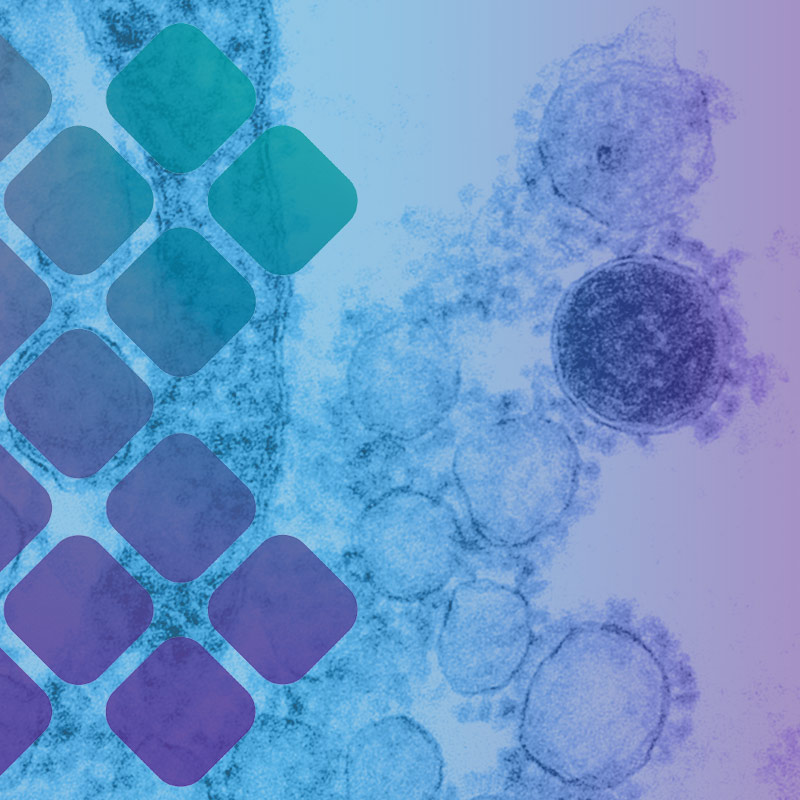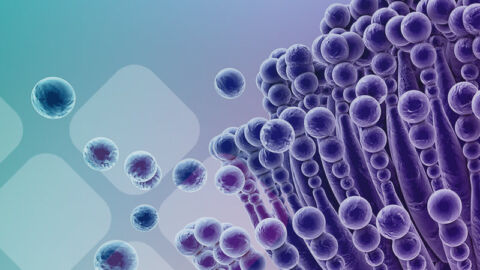Herbal agents are effective in treating fungal overgrowths and are great options in most clinical cases. This blog post shed light on a few herbs that have shown antifungal properties.
Throughout life, almost everyone will experience some type of microbial overgrowth or infection. Whether it be as common as a cold or as debilitating as a systemic mold infection, pretty much everyone will go through this. Being aware of as many antimicrobial agents is beneficial in treatment. We are finding fungal overgrowths to be quite common. Our offered profiles including: OAT, MycoTOX, GI360 Profile, and the Comprehensive Stool Analysis, all can help to diagnose and understand the effect of a fungal overgrowth. Herbal agents are effective in treating fungal overgrowths and are great options in most clinical cases. This post will aim to shed light on a few herbs that have shown antifungal properties.
Goldenseal
The first herb to discuss is a popular one. Hydrastis canadensis, more commonly known as goldenseal, has been used for many decades for its antimicrobial effects. The active ingredient of goldenseal is berberine. Berberine is an isoquinoline alkaloid. This is the component that gives the plant its antifungal properties. This alkaloid is cytotoxic. It works by affecting the cell membrane of fungus. Ergosterol is the most prevalent and abundant sterol in the cell membrane, giving fungal cells their permeability and fluidity. Berberine acts to inhibit ergosterol synthesis. By inhibiting the synthesis, the cell membrane of the fungus becomes unstable and increases its permeability. This causes a loss of internal contents, DNA and protein, of the fungus and subsequently death. Berberine also plays a role in direct lipid peroxidation of the membrane, acting directly to destroy the membrane. Other herbs with berberine as a constituent include Oregon grape root, barberry and goldthread. Any of these, including goldenseal, are valuable components of any antifungal therapy.
Black Walnut
This herb, also known as Juglans nigra, is widely known and used as an antiparasitic agent. It is also a potent antifungal herb. The active component is called juglone. Juglone is a type of organic compound called naphthoquinone. It has shown antifungal properties against topical, intestinal and vaginal candida overgrowth. This compound, in its nanoparticle form, has shown promising efficacy against aspergillus and fusarium mold species. When acting, the juglone also increases cellular catalase and superoxide dismutase. These are common defense enzymes that act at the cellular membrane of the fungal cell to cause damage and death.
Juglone has also shown direct inhibition in cellular respiration of Fusarium mold, a common mold exposure as depicted by the OAT and MycoTOX Profile. It stimulates the increase of glutathione reductase enzyme in addition to its antifungal properties. This enzyme helps to reduce the increase in ROS. Other compounds, phenols, have also been extracted from black walnut. Some include: 3- and 5-caffeoylquinic acids, 3- and 4-p-coumaroylquinic acids, p-coumaric acid, quercetin 3-galactoside, quercetin 3-pentoside derivative, quercetin 3-arabinoside, quercetin 3-xyloside and quercetin 3-rhamnoside. These phenolic compounds have also shown antifungal properties, in particular to candida. With juglone and these phenolic compounds working synergistically, black walnut is a potent option to consider in fungal overgrowth treatment.
Echinacea
This next herb is a common immune boosting supplement known and used by many. Echinacea purpurea has been long touted for its immunomodulatory effects and antiviral nature. It has also shown efficacy against fungal infections and overgrowths. Vaginal candidiasis and Saccharomyces cerevisiae have been successfully treated with this herb. It acts using its polysaccharide rich composition. They work by enhancing the natural killer cells and macrophages of the host. This causes an increase in the phagocytosis of the fungal cells. Other active compounds in Echinacea that give it its immune modulating properties include the alkamide and caffeic acid derivatives. Echinacea’s direct antifungal, along with UV light therapy, is from the acetylenic isobutyl amides it contains. The UV light therapy isn’t necessary, but its addition does enhance Echinacea’s antifungal property.
Echinacea also works in a different way to exert antifungal properties. Fungi, including Aspergillus and Candida, have been studied tirelessly and it has been found that they possess lipoxygenase (LOX) enzymes. Their LOX is like the ones found in humans. Echinacea exerts its anti-inflammatory nature by inhibiting these types of enzymes. So, in the presence of LOX enzyme in fungus, Echinacea exhibits the same inhibitory effect, thus affecting the fungal cell negatively. This makes it more susceptible to the polysaccharide function of enhancing immunity. Echinacea is a great addition to any formula for immune support and for antifungal properties.
Grapefruit Seed Extract
Another herbal option for antifungal therapy is grapefruit seed extract (GSE). This potent extract is used often over the counter for many antimicrobial needs. Its antifungal nature is due to a few mechanisms. One includes its flavone content. The flavones are found in high concentrations in all citrus including grapefruit. The flavones in question are naringin and hesperidin and their derivatives like prunin decanoate. They have been shown to inhibit mycelial growth of not only Candida yeast, but also Aspergillus, Fusarium, and Penicillium.
GSE works by inhibiting fungal cell growth and energy production. It works at the mitochondrial level of the fungal cell. The GSE induces apoptosis by destroying the 60S and L14-A ribosomal proteins found in the mitochondria. Through this inhibition, the conversion of pantothenic acid to coenzyme A. This inhibition disrupts the fungal cellular respiration needed for its own energy production and cellular function. The blockage caused eventually will kill the fungus and disrupt replication. GSE also works by eliminating biofilms that are already present. It also inhibits the formation of new biofilms. GSE can be used not only as a star antifungal player in treatment, but also as a novel biofilm disruptor set in place to enhance the activity of other potent antifungals being used.
Garlic
For centuries, Allium sativum, more commonly known as garlic, has been used for its medicinal properties. Now, most people use garlic only as a nice addition to many savory meals for enhanced flavor. Luckily, its medicinal properties have not been forgotten. Garlic has been touted as antilipidemic, antiproliferative, anti-inflammatory, amongst other great properties. For our purpose we will focus on the more antimicrobial properties and effects of the amazing plant. Allium has shown great efficacy as an antimicrobial agent and as an antifungal.
This plant has various active compounds that give it its medicinal properties. Two are ajoene and allicin. Allicin is the commonly known active compound in garlic. In its pure form, allicin is a potent antifungal with great efficacy against Candida albicans. It has been shown to inhibit candida growth with topical and internal application. The allicin is released from the plant by the alliin that is acted upon by the phospho-pyridoxal enzyme alliinase. Therefore, it’s best to crush garlic cloves and let them sit before adding to your dish when cooking. This time allows for the allicin to be fully released. Once the active allicin is released it can exert its antifungal properties. It works due to its sulfur content. The sulfur, when in contact with the fungus, enters the fungal cell and binds to the sulfur in the DNA and proteins of the fungus and disrupts synthesis thus killing the organism. One would be suspicious that this compound would do the same to human cells when ingested. This is prevented as the sulfur in the glutathione our cells possess binds synergistically with the allicin and thus inactives this action of the garlic. It’s pretty interesting how plants can be helpful to one organism, yet harmful to another. Allicin has also been shown to cause 100% mycelial growth inhibition of Aspergillus niger.
This other compound ajoene is also an organosulfur compound from garlic. It happens to be from allicin. The further degradation of the allicin, allows for the release of this other potent compound. Ajoene has also shown great efficacy in the killing of fungus. Studies have shown its success in treating Candida and Aspergillus. Some other molds that have been found to be common in water damage building exposure that ajoene can combat include Fusarium and Penicillium. Another plant, highly related to garlic, Allium cepa or onion, has also shown great efficacy in killing mold and yeast. With the same compounds found in both these plants, both would be beneficial to any antifungal protocol.
In the discovery of fungal overgrowths, whether yeast or mold, treatment options are vast. These 5 herbs discussed: goldenseal, echinacea, grapefruit seed extract, garlic, and black walnut are options that should be considered. When deciding which herbs to use to treat your clients consider formulations that include these options.
References
1. Aboody, M., & Mickymaray, S. (2020, January 26). Anti-Fungal Efficacy and Mechanisms of Flavonoids. Retrieved December 24, 2020, SOURCE2. Ankri, S., & Mirelman, D. (2001, June 19). Antimicrobial properties of allicin from garlic. Retrieved December 24, 2020, SOURCE3. Arasoglu, T., Mansuroglu, B., Derman, S., Gumus, B., Kocyigit, B., Acar, T., & Kocacaliskan, I. (2016, September 16). Enhancement of Antifungal Activity of Juglone (5-Hydroxy-1,4-naphthoquinone) Using a Poly (d,l-lactic-co-glycolic acid) (PLGA) Nanoparticle System. Retrieved December 24, 2020, SOURCE 4. Bagheri, M., Mahmoudi Rad, M., Mansouri, A., Younespour, S., & Taheripanah, R. (1970, January 01). A comparison between antifungal effect of Fumaria officinalis, Echinacea angustifolia, vinegar, and fluconazole against Candida albicans and Candida glabrata isolated from vagina candidiasis. Retrieved December 24, 2020, SOURCE 5. Binns SE; Purgina B;Bergeron C;Smith ML;Ball L;Baum BR;Arnason JT;. (n.d.). Light-mediated antifungal activity of Echinacea extracts. Retrieved December 24, 2020, SOURCE 6. Bona, E., Cantamessa, S., Pavan, M., Novello, G., Massa, N., Rocchetti, A., . . . Gamalero, E. (2016, October 24). Sensitivity of Candida albicans to essential oils: Are they an alternative to antifungal agents? Retrieved December 24, 2020, SOURCE 7. Cao S; Xu W;Zhang N;Wang Y;Luo Y;He X;Huang K;. (2012). A mitochondria-dependent pathway mediates the apoptosis of GSE-induced yeast. Retrieved December 24, 2020, SOURCE 8. Clark, A., Jurgens, T., & Hufford, C. (2006, January 11). Antimicrobial activity of juglone. Retrieved December 24, 2020, SOURCE 9. Dantas, A., Day, A., Ikeh, M., Kos, I., Achan, B., & Quinn, J. (2015, February 25). Oxidative stress responses in the human fungal pathogen, Candida albicans. Retrieved December 24, 2020, SOURCE 10. Ho, K., Lei, Z., Sumner, L., Coggeshall, M., Hsieh, H., Stewart, G., & Lin, C. (2018, September 29). Identifying Antibacterial Compounds in Black Walnuts (Juglans nigra) Using a Metabolomics Approach. Retrieved December 24, 2020, SOURCE 11. Irkin, R., & Korukluoglu, M. (2007). Control of Aspergillus niger with garlic, onion and leek extracts. Retrieved December 24, 2020, SOURCE 12. Kumar, K. M., & Ramaiah, S. (2011). PHARMACOLOGICAL IMPORTANCE OF ECHINACEA PURPUREA. International Journal of Pharma and Bio Sciences, 2(4), 0975-6299, 304-314. Retrieved December 24, 2020, SOURCE 13. Merali, S., Binns, S., Paulin-Levasseur, M., Flicker, C., Smith, M., Baum, B., . . . Brovelli, J. T. (2008, September 29). Antifungal and Anti-inflammatory Activity of the Genus Echinacea. Retrieved December 24, 2020, SOURCE 14. Mikaili, P., Maadirad, S., Moloudizargari, M., Aghajanshakeri, S., & Sarahroodi, S. (2013, October). Therapeutic uses and pharmacological properties of garlic, shallot, and their biologically active compounds. Retrieved December 24, 2020, SOURCE15. Naganawa, R., Iwata, N., Ishikawa, K., Fukuda, H., Fujino, T., & Suzuki, A. (1996, November 01). Inhibition of microbial growth by ajoene, a sulfur-containing compound derived from garlic. Retrieved December 24, 2020, SOURCE 16. Pereira, J. A., Oliveira, I., Sousa, A., Valentao, P., Andrade, P. B., Ferreira, I. C., . . . Estevinho, L. (2002, November). Walnut (Juglans regia L.) leaves: Phenolic compounds, antibacterial activity and antioxidant potential of different cultivars. Retrieved December 24, 2020, SOURCE 17. R; L. (2006, June). [Ajoene the main active compound of garlic (Allium sativum): A new antifungal agent]. Retrieved December 24, 2020, SOURCE 18. Rodrigues, M. (2018, November 07). The Multifunctional Fungal Ergosterol. Retrieved December 24, 2020, SOURCE 19. S; C. (2004, September). Antimicrobial activity of grapefruit seed and pulp ethanolic extract. Retrieved December 24, 2020, SOURCE 20. Sahibzada MUK; Sadiq A;Faidah HS;Khurram M;Amin MU;Haseeb A;Kakar M;. (n.d.). Berberine nanoparticles with enhanced in vitro bioavailability: Characterization and antimicrobial activity. Retrieved December 24, 2020, SOURCE 21. Salas, M., Céliz, G., Geronazzo, H., Daz, M., & Resnik, S. (2010, August 02). Antifungal activity of natural and enzymatically modified flavonoids isolated from citrus species. Retrieved December 24, 2020, SOURCE 22. SR; D. (2005, March). An overview of the antifungal properties of allicin and its breakdown products--the possibility of a safe and effective antifungal prophylactic. Retrieved December 24, 2020, SOURCE 23. Suleiman, E., & Abdallah, W. (2014, July 15). In vitro Activity of Garlic (Allium sativum) on Some Pathogenic Fungi. Retrieved December 24, 2020, SOURCE 24. VK; M. (2001, February). [Adaptation of the phytopathogenic fungus Fusarium decemcellulare to oxidative stress]. Retrieved December 24, 2020, SOURCE 25. VK; M. (2002, April). [Respiratory activity and naphthoquinone synthesis in the fungus Fusarium decemcellulare exposed to oxidative stress]. Retrieved December 24, 2020, SOURCE 26. Vu, D. C., Lin, C., Coggeshall, M. V., & Vo, P. H. (2018). Identification and Characterization of Phenolic Compounds in Black Walnut Kernels. Retrieved December 24, 2020, SOURCE27. W; K. (2001). [Effects of 33% grapefruit extract on the growth of the yeast--like fungi, dermatopytes and moulds]. Retrieved December 24, 2020, SOURCE28. Yin, M., & Cheng, W. (1998, January 01). Inhibition of Aspergillus niger and Aspergillus flavus by Some Herbs and Spices. Retrieved December 24, 2020, SOURCE 29. Yoshida, S., Kasuga, S., Hayashi, N., Ushiroguchi, T., Matsuura, H., & Nakagawa, S. (1987). Antifungal activity of ajoene derived from garlic. Applied and Environmental Microbiology, 53(3), 615-617. doi:10.1128/aem.53.3.615-617.198730. Zorić, N., Kosalec, I., Tomić, S., Bobnjarić, I., Jug, M., Vlainić, T., & Vlainić, J. (2017, May 17). Membrane of Candida albicans as a target of berberine. Retrieved December 24, 2020, SOURCE




